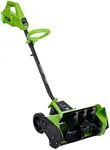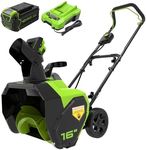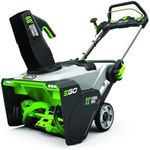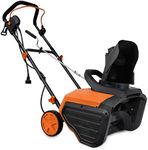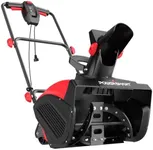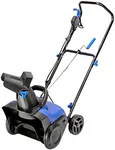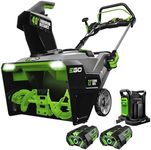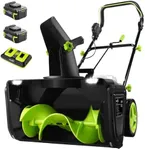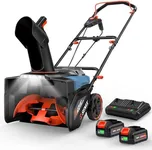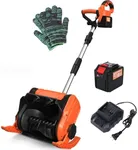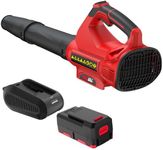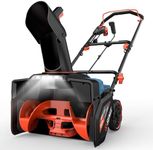Buying Guide for the Best Electric Snow Blowers
Choosing the right electric snow blower can make a significant difference in how efficiently and comfortably you can clear snow from your driveway, sidewalks, and other areas. Electric snow blowers are generally lighter, quieter, and easier to maintain than their gas-powered counterparts, making them a popular choice for many homeowners. To find the best fit for your needs, it's important to understand the key specifications and how they relate to your specific situation.Clearing WidthThe clearing width of a snow blower refers to the width of the path it can clear in a single pass. This is important because a wider clearing width means you can clear more snow in less time. Clearing widths typically range from about 18 inches to 24 inches or more. If you have a large driveway or wide sidewalks, a wider clearing width will be more efficient. For smaller areas or tighter spaces, a narrower width may be more manageable.
Intake HeightThe intake height is the maximum depth of snow that the snow blower can handle in one pass. This is crucial for areas that experience heavy snowfall. Intake heights can range from around 10 inches to over 20 inches. If you live in an area with frequent, heavy snowfalls, a higher intake height will be beneficial. For regions with lighter, less frequent snow, a lower intake height may suffice.
Power SourceElectric snow blowers can be corded or cordless. Corded models need to be plugged into an electrical outlet, which can limit your range but provides consistent power. Cordless models run on rechargeable batteries, offering more mobility but requiring recharges. If you have a small area to clear and access to outdoor outlets, a corded model might be ideal. For larger areas or if you prefer more freedom of movement, a cordless model could be a better choice.
Power RatingThe power rating of an electric snow blower is usually measured in amps for corded models and volts for cordless models. Higher power ratings generally mean the snow blower can handle heavier, denser snow more effectively. For light to moderate snowfall, a lower power rating (around 10-15 amps or 40-60 volts) may be sufficient. For heavy, wet snow, look for higher power ratings (15+ amps or 60+ volts).
WeightThe weight of the snow blower affects how easy it is to maneuver and transport. Lighter models are easier to handle, especially for smaller or less physically strong users. However, heavier models often have more power and can handle tougher snow conditions. If ease of use is a priority, look for a lighter model. If you need to tackle heavy, compacted snow, a heavier, more powerful model might be necessary.
Auger TypeThe auger is the part of the snow blower that scoops up the snow and throws it out of the chute. Single-stage augers are common in electric snow blowers and are suitable for light to moderate snow. They are typically made of plastic or rubber, which is gentle on surfaces but may struggle with very heavy snow. If you have a paved driveway and light to moderate snowfall, a single-stage auger will work well. For heavier snow or gravel surfaces, consider a model with a more robust auger.
Chute ControlChute control allows you to direct where the snow is thrown. Manual chute control requires you to adjust the direction by hand, while remote chute control lets you adjust it from the handle. This feature is important for convenience and efficiency. If you have a lot of areas to clear and want to minimize stopping to adjust the chute, look for a model with remote chute control. For smaller areas, manual control may be sufficient.
